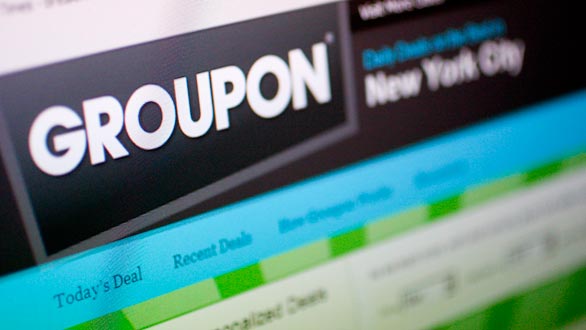Despite all the naysayers about Groupon and its business model, the facts remain the same: Groupon is an enormous success and helped to launch an entire industry. Whether it will be worth $5 billion or $20 billion based on market capitalization will be determined by investors, but its anticipated valuation is noteworthy for a three-year-old company. What’s most interesting is that Groupon built its empire with one major proven method: performance advertising.
In early 2010, from what I am told, the company knew that it was more than just a “small hit.” As Russian investment firm Digital Sky Technologies (DST) invested $135 million in Groupon in April 2010 and more and more companies sought to acquire Groupon, the executive team and investors realized they needed to do something fast.
They needed to show that the Groupon model worked not only amazingly, but worked everywhere and could easily get tons of new users overnight wherever it launched.
So Groupon started to work extensively with performance marketing companies, spending much of its investments on cost-per-action offers to drive new users to its site. At one time, Groupon was perhaps the biggest CPA advertiser on the planet, driving tens of millions of dollars on over 30 different CPA networks, paying for each visitor who signed up from each new city it was expanding into.
Everyone always talks about how performance marketing is a great way to help secure a positive ROI. Commission-based systems like Amazon’s associates are easy ways to sell products and only pay on those sold products. Affiliate and performance marketing represents one of the fastest growing segments of the industry despite the lackluster economy.
Groupon demonstrated that using CPA advertising to obtain new subscribers is an effective approach. Consider these facts provided by Groupon to the Securities and Exchange Commission:
- Its subscriber base grew from 152,203 as of June 2009 to 115.7 million as of June 2011.
- It sold 116,231 Groupons in Q2 2009 compared to 32.5 million Groupons in Q2 2011.
- It expanded from five North American markets as of June 2009 to 175 North American markets and 45 countries as of June 2011.
According to a TakingPitches.com report, Groupon’s marketing spend in 2010 was 94 percent of its gross profit. This is an amazingly high margin, showing that Groupon considered new customer acquisition to be a key goal before it was bought out or filed for an IPO.
Its technique worked, because Groupon went from an estimated $1.35 billion valuation in mid-April 2010 (Source: TechCrunch) to $15 billion in January 2011 (Source: NYTimes.com) to most recently $25 billion to $30 billion (Source: NYTimes.com).
This is an incredible valuation growth, based almost completely on its enormous performance-based advertising budget. It’s really quiet amazing: Groupon’s valuation has increased exponentially in relationship to its traffic and user base. Over time, each user in each country seems to have been worth more to the market than the previous user.
Financial analysts must start taking into account this new metric. What’s great is that it’s completely based on performance-based marketing, in which acquiring more and more users in the international Internet marketplace grows your value exponentially. For companies looking for funding and eventually looking to pursue an IPO or major sale, this is a revolutionary trend. This is why performance-based marketing is the fastest growing segment of our industry and more importantly, one of the most effective.




